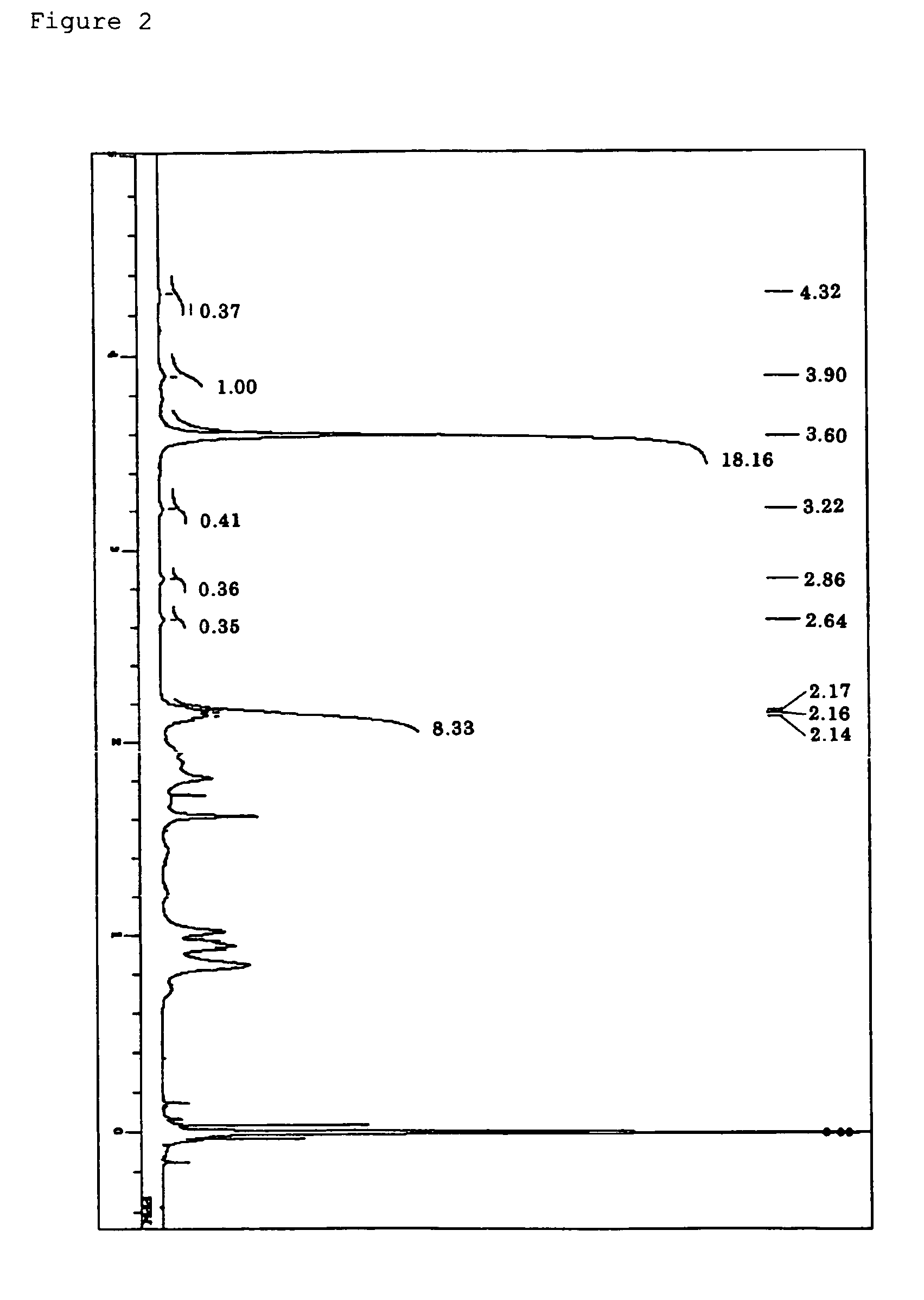Fluorinated polymer and polymer composition
a fluorinated polymer and polymer composition technology, applied in the field of fluorine-containing polymers, can solve the problems of insufficient peeling force, no use, significant increase in peeling force, etc., and achieve the effects of good coating performance, excellent non-wetting performance, and excellent non-sticking performan
- Summary
- Abstract
- Description
- Claims
- Application Information
AI Technical Summary
Benefits of technology
Problems solved by technology
Method used
Image
Examples
production example 1
Synthesis of γ-methacryloxypropylhepta(trifluoropropyl)-T8-silsesquioxane
[0246]To a 1-L four-necked flask attached with a reflux condenser, a thermometer, and a dropping funnel, trifluoropropyltrimethoxysilane (100 g), THF (500 mL), deionized water (10.5 g), and sodium hydroxide (7.9 g) were charged, and the whole was heated in an oil bath from room temperature to a temperature at which THF begins to be refluxed, while the whole was stirred with a magnetic stirrer. The reaction was completed after 5 hours continuous agitation from the beginning of the reflux. After that, the flask was taken out of the oil bath and stood overnight at room temperature. Next, the flask was set in the oil bath again and the mixture was concentrated by heating and under normal pressure until a solid was deposited.
[0247]The deposited product was filtrated and collected by using a pressure filter provided with a membrane filter having a pore size of 0.5 μm. Next, the obtained solid matter was washed with T...
example 1
Synthesis of Polymer (A1)
Preparation of Polymerizable Composition
[0250]In an ampule made of heat-resistance glass, the compound (a-1), methylmethacrylate, 2,2′-azobisisobutylonitrile, and α,α,α-trifluorotoluene were introduced, and the whole was immediately cooled by using liquid nitrogen. After that, the resultant was subjected to lyophilization three times with a vacuum device provided with an oil rotary pump (pressure: 1.0 Pa), and the ampule was sealed by using a hand burner while the vacuum condition was maintained.
[0251]The molar ratio between the compound (a-1) and methylmethacrylate which were sealed in the ampule was set to (a-1):methylmethacrylate=2:98. The amount of α,α,α-trifluorotoluene was set to 30 weight % with respect to the total weight of the compound (a-1) and methylmethacrylate. The amount of 2,2′-azobisisobutylonitrile was set to 0.005 mol % with respect to the total moles of the compound (a-1) and methylmethacrylate.
[0252]The ampule made of heat-...
examples 2 to 6
Synthesis of Polymers (A2) to (A6)
[0253]Preparation of polymerizable composition and polymerization were performed as in the case of Example 1 except that charged monomer composition of the compound (a-1) and methylmethacrylate which were sealed in the ampule was changed as shown in the Table 1. Table 2 shows the monomer composition of a structural unit derived from the compound (a-1) and a structural unit derived from methylmethacrylate and the weight average molecular weight of each of the polymers (A2) to (A6).
PUM
| Property | Measurement | Unit |
|---|---|---|
| molecular weight distribution | aaaaa | aaaaa |
| temperature | aaaaa | aaaaa |
| temperature | aaaaa | aaaaa |
Abstract
Description
Claims
Application Information
 Login to View More
Login to View More - R&D
- Intellectual Property
- Life Sciences
- Materials
- Tech Scout
- Unparalleled Data Quality
- Higher Quality Content
- 60% Fewer Hallucinations
Browse by: Latest US Patents, China's latest patents, Technical Efficacy Thesaurus, Application Domain, Technology Topic, Popular Technical Reports.
© 2025 PatSnap. All rights reserved.Legal|Privacy policy|Modern Slavery Act Transparency Statement|Sitemap|About US| Contact US: help@patsnap.com



